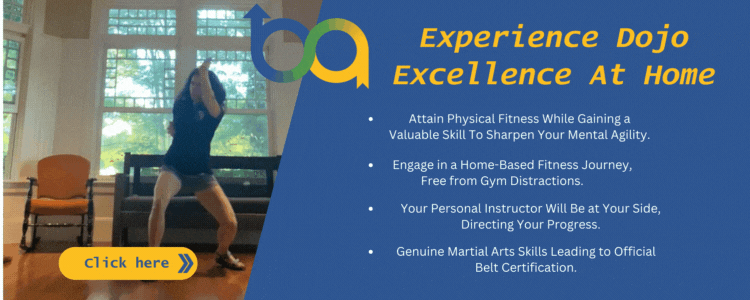In the martial arts studios that I have operated, I have found three main reasons people come in to inquire about training: self-defense, discipline, and/or confidence. Regardless of what reason they state, I ask them “What does that mean to you?” I believe it is an important question for a few reasons. First, it’s vital to ensure we are on the same page with what they hope to gain. Second, I want to begin to paint a picture in their mind of what achieving that goal will look like. What I have found most often is that although they held value in obtaining the end result, they rarely had a clear definition of what it really entailed.
I want to discuss one of the most prominent results from martial arts training: confidence. Let’s define confidence, how to develop the best martial arts program to address it, and how self-confidence can overflow into everyday life.
 What Does Confidence Look Like?
What Does Confidence Look Like?
Webster’s defines confidence as: “faith or belief that one will act in a right, proper, or effective way”. I mostly agree with this definition with one correction: replace faith or belief with, “absolute certainty that one will act in a right, proper, or effective way”. This is not saying that one can’t misspeak or make an error, but it is to say that these types of errors will still be within the definition of the right, proper or effective way. It’s difficult to propagate the theory that if an individual makes a mistake during a training process that it is considered “wrong” or “ineffective”. We know that especially during training, a student learns through mistakes and errors. Maxwell Maltz (Psycho-Cybernetics, 1960) said it best: “You are not your mistakes; you are no more or less than anyone else”.
My close friend and fellow martial arts instructor and I were discussing our personal interpretations of confidence recently, and how that corresponds to the above definition. We have both run multiple martial arts studios for decades combined and in addition, we have experience working successfully in “Corporate America”. He was in the medical device industry, and I developed programs in my own company for some of the largest resorts in the world.
 In this conversation I asked him how he would feel if he was asked on short notice to fill a 30-minute time slot in a presentation to a large audience. I didn’t define the audience size: to date, the largest audience I’ve presented to was about 5,000. I asked him, “would you do it? What would your fear level be?”
In this conversation I asked him how he would feel if he was asked on short notice to fill a 30-minute time slot in a presentation to a large audience. I didn’t define the audience size: to date, the largest audience I’ve presented to was about 5,000. I asked him, “would you do it? What would your fear level be?”
His response was exactly what I expected. He said, “of course I would, and fear wouldn’t enter my mind. I would focus on what I wanted to discuss.” He then turned the question to me, and added a caveat that I would need to speak about banking to a group of bankers (which is an area that I have no expertise.) Would I want to do it? No, but that’s not the question. Yes, I could do it and most importantly, fear wouldn’t enter my mind. Without restriction, I could use the audience’s current knowledge and guide the conversation from there. Throw in a few correlations from my business and karate life, and 30 minutes would fly by.
What was interesting during the conversation is that we had, on different paths, arrived at the same conclusion. The skills we developed in our early martial arts training were the building blocks of tenacity, discipline and most of all confidence that led to that success. Only after many years of training, and inevitably making mistakes, did we truly understand how important confidence is within the scope of martial arts expertise and leadership.
Personally, I’ve been teaching and, in a way, presenting for close to 35 years. I learned early on in my martial arts training that anger and fear block the ability to think and respond to your environment. When you take fear in the form of self-doubt out of the equation, you can contribute confidence to any situation.
The Eroding Confidence Drill
Often, children can gain confidence during training but are less able to maintain it – so I like to use the following drill in order to help students understand the importance of maintaining confidence, regardless of situational changes. Children will see their confidence increase as their competence increases, and we see a direct correlation between the two demonstrated in this drill.
This lesson was done with a group of 35 children between the ages of 7 to 11 years old.
I had the group do a simple set of moves at a slow speed. I lead them through three reps, and then complimented them on their performance. Following that, I asked for a volunteer to demonstrate this set of moves. 7 kids raised their hand to showcase their skill (roughly 25%).
I brought up one of the volunteers, and we together lead the class through 3 more reps. I complemented the volunteer’s performance, and added the rest of the group until they all got it. I started a round of applause, and the group joined in. Then, I asked for another volunteer. This time all but 3 hands went up. I realized there needs to be an incentive for the hold outs (all new to the class) to be willing to overcome their fear of being singled out in front of the group. I called up the next volunteer, a new student as well.
 Again, we lead the class through 3 more reps. This time, I added to the compliment “you guys did great… and the volunteer is a new student! Isn’t it amazing how good you guys are?” and again we applauded. I said, “let’s do two more volunteers, who will be next?” Not only did every hand go up, but you know how when you’re really sure, you get that extra 4 or 5 inches of stretch out of your arm? This is the class I’m now looking at. Everyone was undeniably excited to be singled out, and consequently, praised in front of the class.
Again, we lead the class through 3 more reps. This time, I added to the compliment “you guys did great… and the volunteer is a new student! Isn’t it amazing how good you guys are?” and again we applauded. I said, “let’s do two more volunteers, who will be next?” Not only did every hand go up, but you know how when you’re really sure, you get that extra 4 or 5 inches of stretch out of your arm? This is the class I’m now looking at. Everyone was undeniably excited to be singled out, and consequently, praised in front of the class.
After 9 successful repetitions, the reward of my praise and recognition of the group’s applause has everyone certain they can execute the drill successfully. They are all at a point of absolute certainty. Because this lesson is designed to help the students understand what confidence is and how to develop it, I need to reverse the course and see how long the group maintains this high level of confidence.
Now I called on one of the more advanced students in the class. This 11-year-old is not only one of the oldest kids in the class, but has been training with me in our martial arts dojo since the age of 3. As a side note, although she doesn’t know exactly what’s about to happen, she knows me well enough to know something is up. I tell her “Ok, same drill but faster”. I don’t do it with her. She does it faster, and reasonably well. I point out a slight error in the foot work. I ask her what happened, and she said it was hard to do that fast. I reply, “I know now go even faster, go!” She repeats, and it’s now even sloppier. I ask her, “with more practice could it be done that fast?” She gives me a grin, knowing what I want her to say. “Yes sir!” she replies. “Good!” I say, “let’s go one more time, but even faster… GO!”
This time you could barely make out the original drill. To soften the blow of failing in front of the class and reinforcing her already solid confidence, I said “You know I set you up, right? Who wants to be next?” No hands went up! Her response was a confidence boost to me as a teacher. She said, “I knew you were going to make it impossible for me!”
From her first experience in karate kids Pee Wee class, I have celebrated her successes and failures. As a seasoned student, she was able to distinguish the difference between my celebration and my corrections and know that each has its own advantage. I use this drill to demonstrate to my class how quickly confidence can be built or eroded based on the perception of competence.
Incorporation into Daily Life
While it’s easy to discern how important confidence is within the dojo, we know that it’s also imperative in everyday life. Recall the scenario we discussed earlier regarding a last-minute request to give a speech. How many of us would genuinely be able to do something like that?
In reality, we can look at the things that we do on a daily basis and incorporate confidence into all of them. Whether we are obligated to perform a job, or are enrolled in school, there is some degree of confidence *within* our competence that we hold. Being able to recognize our abilities, and capitalize on our potential, we can hold that confidence close and maintain it… regardless of our challenges.
The significance of learning confidence in martial arts cannot be overstated. Beyond simply mastering physical techniques, cultivating self-assurance plays a transformative role in a martial artist’s journey. Confidence empowers individuals to conquer fears and perform at their best, both inside and outside the training arena. It fosters mental resilience, allowing practitioners to stay composed in high-pressure situations.
Moreover, confidence breeds respect, not only for oneself but also for others, fostering a positive and supportive martial arts community. As students gain confidence through consistent practice and perseverance, they unlock their true potential, unlocking a path of continuous growth and self-discovery.
Ultimately, learning confidence in the martial arts becomes a life-enriching skill that extends far beyond the dojo, leaving a profound impact on personal development, relationships, and overall well-being.






